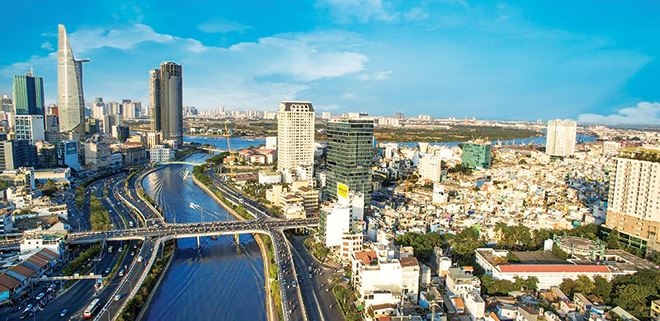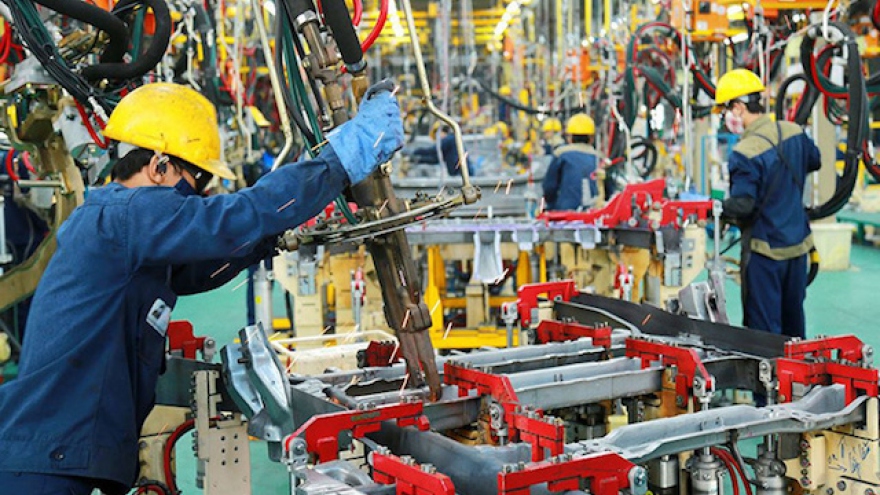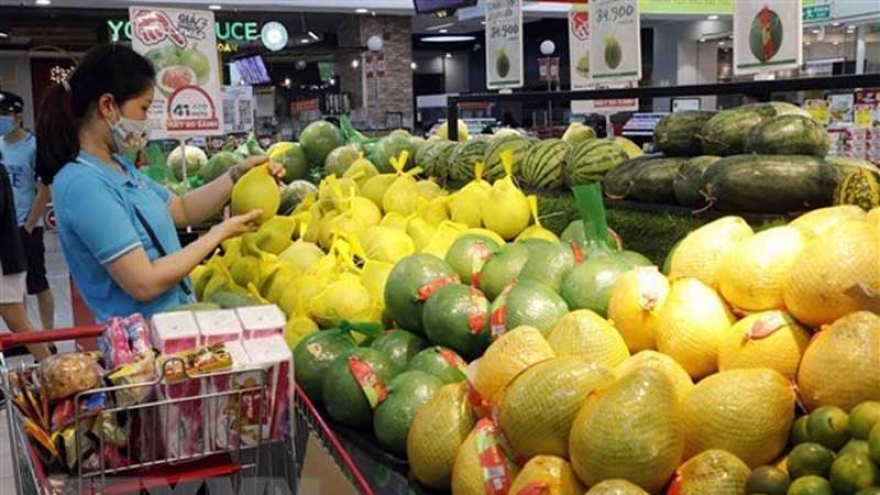WB push for rapid vaccination and fiscal policy support to help reboot economy
VOV.VN - The policy of living safely alongside the COVID-19 pandemic, coupled with rapid vaccination and fiscal policy support, are expected to help the domestic economy to recover, according to the latest Vietnam Macro Monitoring report released by the World Bank (WB).
The report outlines that despite the negative impacts of the COVID-19 pandemic, industrial production index rebounded strongly in November following an increase of 5.5%, thereby proving its resilience again.
This solid recovery partly serves to reflect the resumption of economic activities occurring in southern provinces, marking a rise of 13.3% on-month.
Furthermore, production of electronic, computer, and optical products also grew strongly by 8.5% on-year, while the manufacturing Purchasing Managers' Index (PMI) stood at 52.2 in November, almost the same level as in October and above the 50.0 neutral benchmark, indicating a consistent improvement in economic conditions.
Elsewhere, retail sales increased by 6.2% in November, largely driven by domestic demand’s continued recovery, while sales of services were also recovering faster in the aftermath as they rose by 12.5%. Nevertheless, both were below the levels reported a year previously.
The number of newly-established formal firms also increased by 45% in November, only the second month where an increase has been recorded since May. Firm exit numbers also rose, but at a slower pace than firm entry, whilst more businesses resumed operations rather than suspended operations.
The overall improvements recorded in formal firm dynamics could therefore be seen to reflect the reduction of delays in official registration of new enterprises and business closure caused by the lockdown. The higher net entry could also be attributed to improved economic conditions.
Most notably, merchandise exports hit a record high of US$31.9 billion to improve the trade balance. Accordingly, the trade surplus reached US$1.3 billion in November as merchandise export growth accelerated from 6.1% in October to 26.5% in November, exceeding the annual import growth rate of 24.1% in the process.
Year to date merchandise trade registered a surplus of US$1.46 billion to strengthen export performance, with this being put down to a resumption of manufacturing activities, particularly in high-tech product sectors. Exports of phones, computers and electronics, and machinery, which accounted for over 40% of total exports, increased by 19.6% in November to US$13.3 billion.
Moreover, exports of textiles and garment also rebounded strongly, increasing by 24.9%, while exports of footwear and wooden products declined for a fourth month. In terms of trading partners, after falling for two months exports to the United States surged by 3.1% in October, with this figure estimated to have risen by 13.8% to US$8.0 billion in November.
Exports to China also accelerated from 4.8% in October to 11.7% in November, reaching US$6.0 billion in the process.
FDI commitments increased by 71.2% in November after enduring a dip in October, with this mainly driven by recovering investment in manufacturing, up 40.2%.
Over the initial eleven months of the year, the country attracted a total of US$26.5 billion worth of FDI commitment, a figure comparable to the amount committed in the same period in 2020.
FDI disbursement continued to recover after suffering a sharp decline in the third quarter, up 4.3% in November, although this has yet to reach the level observed a year ago. Indeed, during the initial eleven months of the year it was 4.2% lower than in the same period from last year.
Inflation also ticked up due to fuel price hikes and recovering non-food domestic demand after two months of decreases, with the Consumer Price Index (CPI) increasing by 0.3% in November.
This partly reflects the rising cost in transports due to higher fuel prices, recovering domestic demand for non-food product, as well as increasing logistical costs.
Food prices continued to drop, falling by 0.2% thanks to well-maintained food supply chains. Compared to a year ago, CPI rose by 2.1% on-year, slightly higher than in October, but well below the 4.0% target set by the State Bank of Vietnam.
According to experts, although the case fatality rate continues to trend downwards, the numbers of new COVID-19 cases is rapidly rising.
They therefore underlined the importance of the accelerated vaccination programme, vigilance in social distancing measures, testing, and quarantining as a means of avoiding a new wave of infections which will impact of lives and force fresh restrictive measures.
On the fiscal front, they underscored the importance of providing support to impacted workers and households, a move which could be an essential avenue to achieve this objective.
Given the available fiscal space, along with difficulties registered in implementing the budget this year, the Government may also consider revenue measures which strive to support domestic demand. This could include a reduction in the value-add taxes (VAT) for 2022 in support of private consumption.



